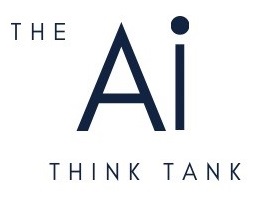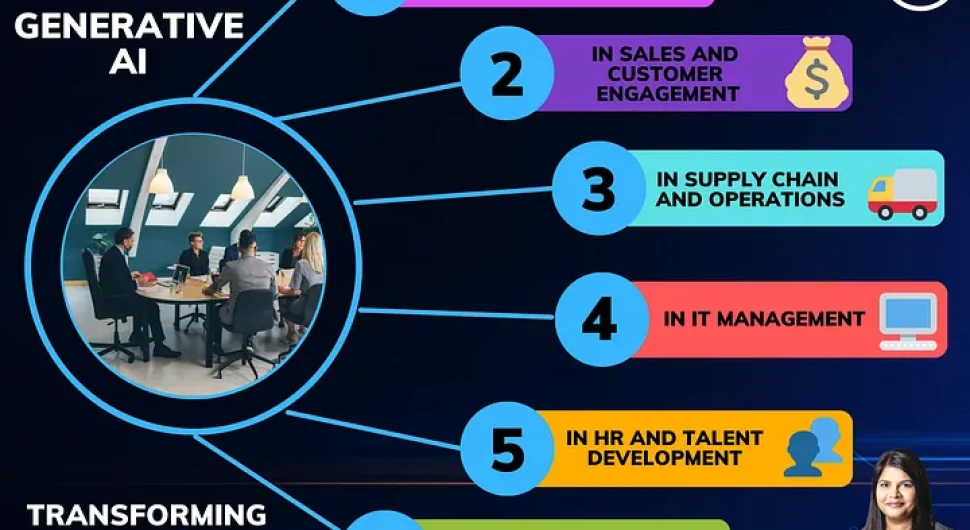Artificial Intelligence (AI) is no longer a buzzword; it’s a revolution that’s fundamentally altering the landscape of various industries — be it healthcare, finance, or retail.
However, one area that stands out for its innovative thrust is the use of generative AI within organizations.
This blog post aims to delve deep into the transformative impact of generative AI on how companies operate, innovate, and compete.
From automating mundane tasks to stimulating creative problem-solving, Generative AI has emerged as a game-changer for modern organizations.
Yet, while the technology presents unparalleled opportunities for efficiency and growth, it also introduces its own set of challenges that businesses must navigate.
So, let’s unpack this transformative technology to understand its full organizational implications.
Generative AI
Understanding the concept of Generative AI is crucial for grasping how it can significantly impact organizations.
Generative AI refers to a category of artificial intelligence algorithms that can generate new data from an existing dataset. These algorithms can produce content such as text, images, audio, or even complex simulations.
The term ‘Generative’ stems from the system’s ability to ‘generate’ outputs autonomously, making it a significant departure from traditional, discriminative models that only classify or analyse data.
How Does It Work?
At its core, a Generative model learns to understand the statistical properties and patterns within a dataset during a training phase.
Once trained, it can generate new data that reflects similar characteristics.
Unlike traditional algorithms that output a single prediction, Generative models can produce multiple, varied outputs, offering a richer, more nuanced analysis.
Types of Generative AI
GANs (Generative Adversarial Networks):
These involve two neural networks — a generator and a discriminator — working in tandem. The generator creates data, and the discriminator evaluates it. Over time, the generator learns to produce data that is increasingly indistinguishable from real data.
LSTMs (Long Short-Term Memory):
These are a type of recurrent neural network (RNN) optimized for sequence prediction problems. LSTMs are particularly useful for understanding time-series data and are commonly used in natural language processing tasks.
Transformer based models:
These are newer architectures like GPT (Generative Pre-trained Transformer) and BERT (Bidirectional Encoder Representations from Transformers), which have made significant strides in natural language understanding and generation.
Highly effective in context-aware applications, they are commonly found in chatbots, translation services, and content creation.
There are other notable ones such as Variational Autoencoders (VAEs), Markov Chains, and so on also fall under the generative AI umbrella. Each has its unique strengths and applications.
Understanding these different types of generative AI helps us appreciate the scope and potential of this transformative technology in organizational settings.
Why is Generative AI Important for Organizations?
The importance of Generative AI for organizations cannot be overstated.
As companies evolve in an increasingly competitive and complex landscape, Generative AI serves as a linchpin for both operational excellence and innovative growth.
Efficiency
One of the most compelling advantages of Generative AI is its ability to automate and streamline operations.
By reducing manual labour in tasks ranging from data entry to complex decision-making, Generative AI allows organizations to achieve higher efficiency levels.
This not only cuts costs but also frees up human resources to engage in more strategic, higher-value activities.
Creativity
While AI is often associated with automation and data analytics, its role in enhancing creativity is equally significant.
Generative AI can assist in creative tasks such as content generation, design optimization, and even in artistic endeavours.
By quickly generating multiple creative options based on certain parameters, it allows human operators to select, tweak, or merge ideas, significantly speeding up the creative process.
Data Utilization
In today’s data-rich environment, one of the biggest challenges organizations face is how to effectively use the massive amounts of information they gather.
Generative AI provides powerful tools for data analysis, interpretation, and utilization. It can sift through large datasets to identify patterns or trends that might be invisible to the human eye, converting data into actionable insights.
Generative AI Use cases — across various functions:
As organizations strive for innovation and efficiency, Generative AI finds versatile applications across various functional departments, enhancing operations, decision-making, and even creative processes.
1. In Financial Management:
In Financial Management, Generative AI significantly automates operations, enhances real-time monitoring and forecasting, and bolsters risk and compliance measures. The technology simplifies complex financial processes, provides data-driven insights for sales strategy, and elevates financial advisory services through personalized, data-based recommendations.
2. In Sales and Customer Engagement
In Sales and Customer engagement, Generative AI optimizes performance by delivering personalized sales recommendations, identifying high-potential leads, and automating marketing workflows. The technology also aids in cost-efficient channel selection, provides deep market insights, and enhances sales coaching through hyper-personalized training.
3. In Supply Chain and Operations
Generative AI is revolutionising supply chain and operations, offering data-driven solutions in product design, manufacturing management, and supplier selection. It enhances predictive maintenance, capacity planning, and quality control, while also streamlining inventory management and customer support functions. The technology adds an unprecedented layer of efficiency and intelligence across the supply chain and customer engagement processes.
4. In IT Management:
In IT Management, Generative AI streamlines tasks and boosts efficiency by auto-generating code, enabling real-time incident management, and simplifying support processes. It not only minimizes system downtime but also optimizes workforce efforts by automating routine tasks, freeing up human staff to tackle more complex challenges.
5. In HR and Talent Development
In the sphere of HR and Talent Development, Generative AI enhances personalized training modules, streamlines recruitment and onboarding processes, and curates role-specific orientations. The technology also focuses on employee wellbeing by analysing relevant data points and plays a vital role in evolving and improving corporate culture.
6. In Risk Mitigation and Legal matters
Generative AI offers comprehensive solutions in the risk and legal sectors by automating mundane legal tasks and enhancing error detection. The technology simplifies the creation of diligence reports and enables efficient data extraction and document summarization. It also provides robust support in intellectual property management and incorporates legal chatbots to handle basic inquiries, thus optimizing overall workflow.
Ethical and Practical Challenges in Generative AI Adoption
Ethical Concerns
Generative AI, while promising, poses significant ethical dilemmas such as data privacy and biased algorithms. With large datasets being a prerequisite for training, ensuring the ethical collection and utilization of data is paramount. Moreover, AI systems can inadvertently learn the biases present in their training data, perpetuating social and cultural prejudices.
Implementation Barriers
On the practical side, barriers to adoption include high implementation costs and a lack of in-house expertise. As AI solutions often require sophisticated hardware and specialized knowledge, these factors can impede a smooth transition to an AI-enabled workflow.
Future Challenges
Looking ahead, organizations must prepare for evolving regulations surrounding AI ethics and data usage. Moreover, as AI technology rapidly advances, keeping systems updated and staff adequately trained will be an ongoing challenge.
Conclusion
Generative AI is more than just a technological trend; it’s a transformative force that offers organizations unparalleled efficiency, enhanced creativity, intelligent data utilization, and improved customer engagement, among other benefits.
However, its adoption is not without challenges — ethical concerns, implementation barriers, and future uncertainties must be judiciously navigated.
As AI technology continues to evolve, its impact on organizations will only intensify, opening up new avenues for innovation while presenting fresh ethical and operational challenges.
Given the far-reaching implications of Generative AI, the time to consider its integration into your organization is now.
Begin by conducting an internal audit to assess readiness, explore pilot projects to understand its impact, and invest in training to build in-house expertise.
Seize the moment to prepare your organization for a future rich in opportunity and complexity, driven by the power of Generative AI.

